Also available in: Deutsch
The sights of Vienna, Austria’s capital, attract many tourists. The city is still full of historic buildings and characterized by its unique atmosphere. The center of the old town is even a UNESCO World Heritage Site and has impressed us immensely.
Vienna – Tips for 2 Days in the Historic City
- Accommodation in Vienna – Our Hotel Tip
- 1. Schönbrunn Palace
- 2. Naschmarkt
- 3. State Opera
- 4. Burggarten
- 5. Hofburg
- 6. Graben
- 7. St. Stephen’s Cathedral
- 8. The Ankeruhr Clock (Anchor Clock)
- 9. Belvedere Palace
- 10. Hundertwasser House
- 11. The Prater in Vienna
- Bonus Point: The Austrian Cuisine
- Things to Do in Vienna: Tours and Tickets
- How to get to Vienna
Since Vienna is the third largest city in the German-speaking world, there is of course a lot to discover. In this article, you’ll learn everything about what sights you should explore during 2 days in Vienna and in addition to that, we’ll also give you some tips on what typical Austrian food you should try during your visit.
Accommodation in Vienna – Our Hotel Tip
Vienna is a big city and it’s helpful to have a good starting point if you want to explore the city. Prices for accommodation in Vienna are sometimes very high and it’s recommended to stay a little outside the center with a good access to the trains.
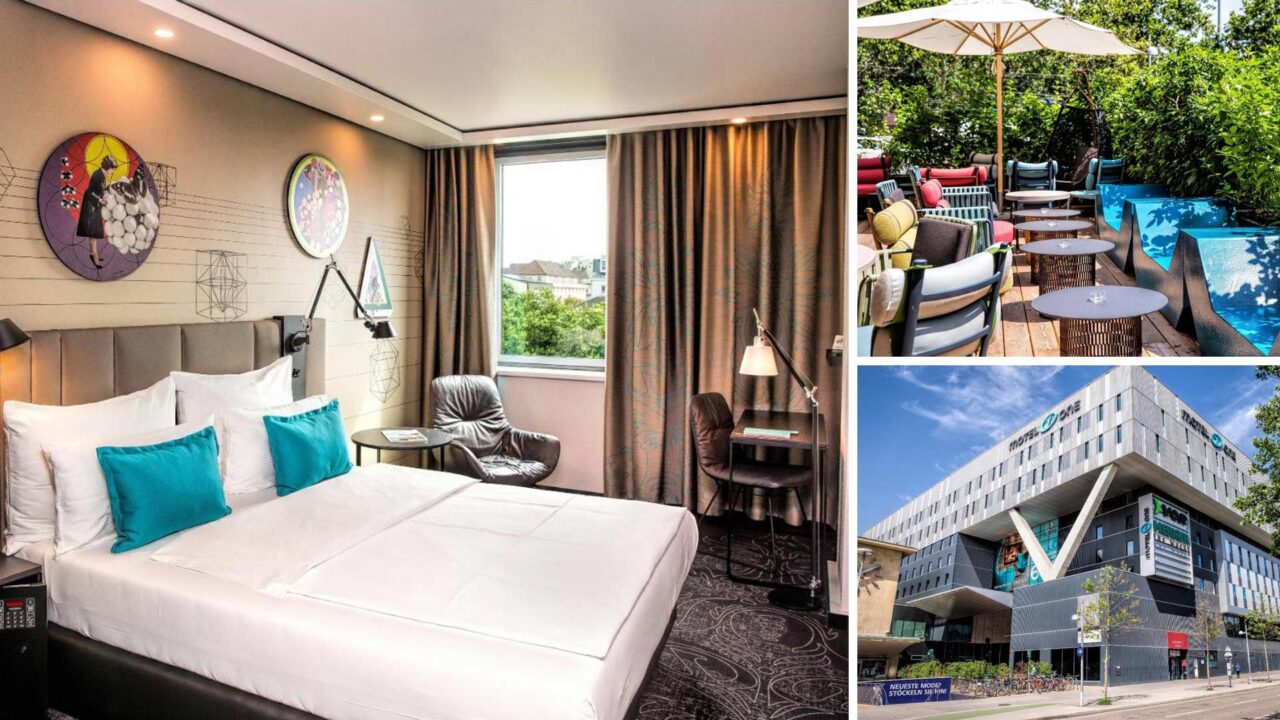
We can recommend the Motel One at the west station. From the train station you can go straight to the hotel and get to the city center of Vienna within 10 minutes by subway. The rooms are not too spacious, but they offer everything you need. A comfortable bed, air conditioning, TV, free Wi-Fi, etc. Here you can find more accommodation in Vienna.
1. Schönbrunn Palace
Schönbrunn Palace is one of Vienna’s many sights and the largest castle in Austria. It was already built in the 18th century (at least in its current form) for the Empress Maria Theresa. Since 1996 it is also part of the UNESCO World Heritage Site.
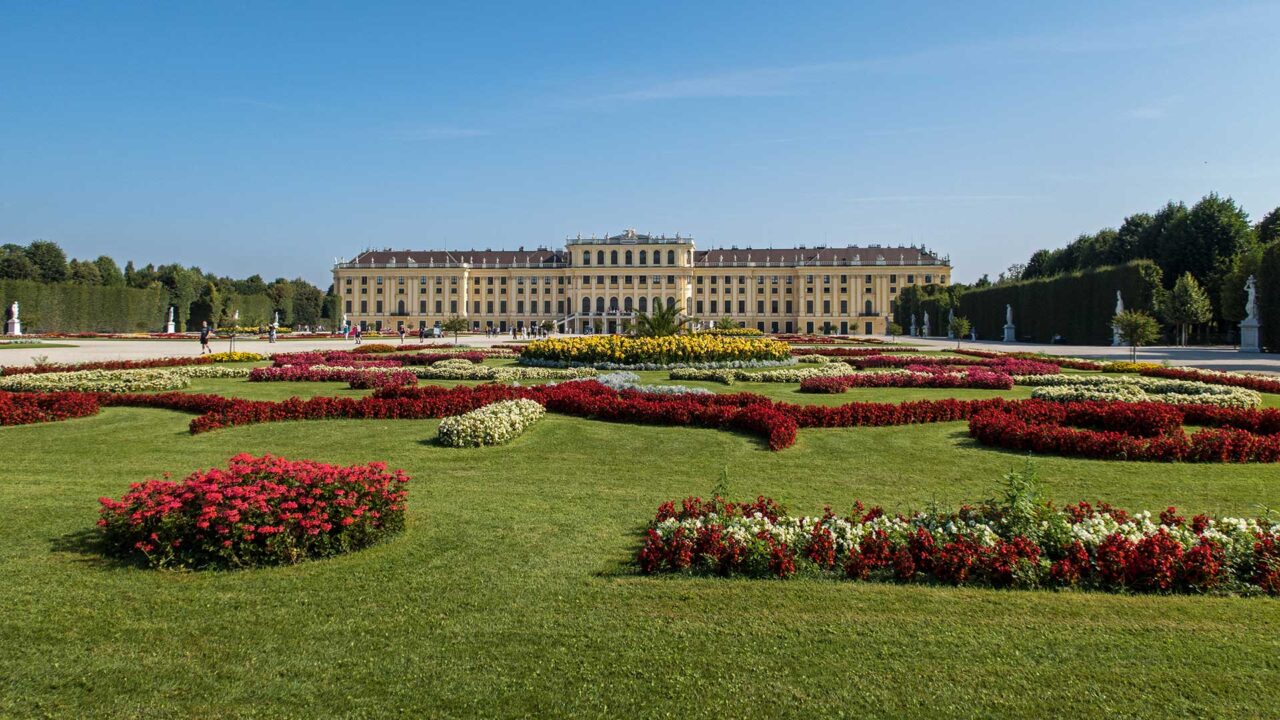
Most of Schönbrunn Palace is now a museum, which you can visit. But the beautifully maintained park also attracts many visitors. Over 8 million tourists come here every year, yet it was not too crowded during our visit.

From the hill, you have a great view of the castle, the gardens, and the city of Vienna. Locals use this pace to relax and you can visit the park for free. If you want to see the inside of Schönbrunn Palace, a guided tour is definitely recommended.
2. Naschmarkt
Right next to the subway station Kettenbrückengasse you’ll find the popular Naschmarkt of Vienna. It’s the largest market in the city center and offers many stalls with clothes, fruits etc. as well as many restaurants, bars or snack bars.
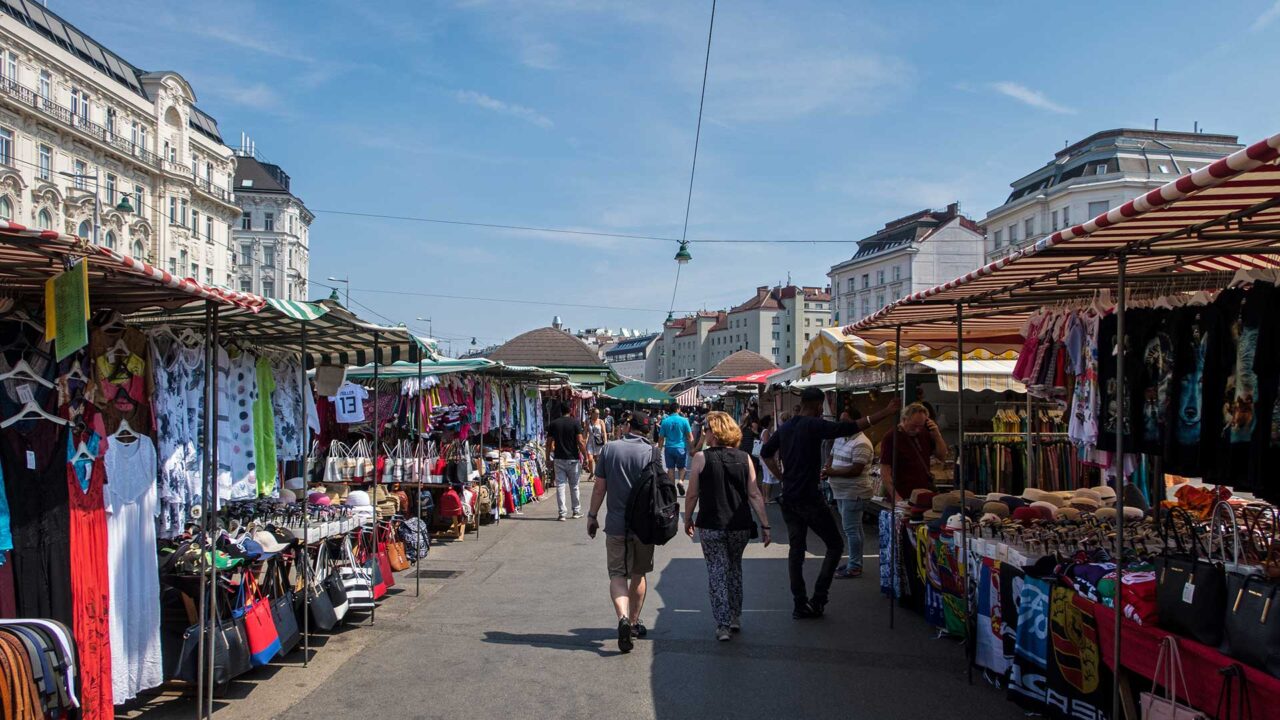
Especially during the summer months, the Naschmarkt is well-visited, because the restaurants are open until 11 pm. Here you will find mainly Turkish and Greek food or dishes from former Yugoslavia, but of course also Viennese cuisine.
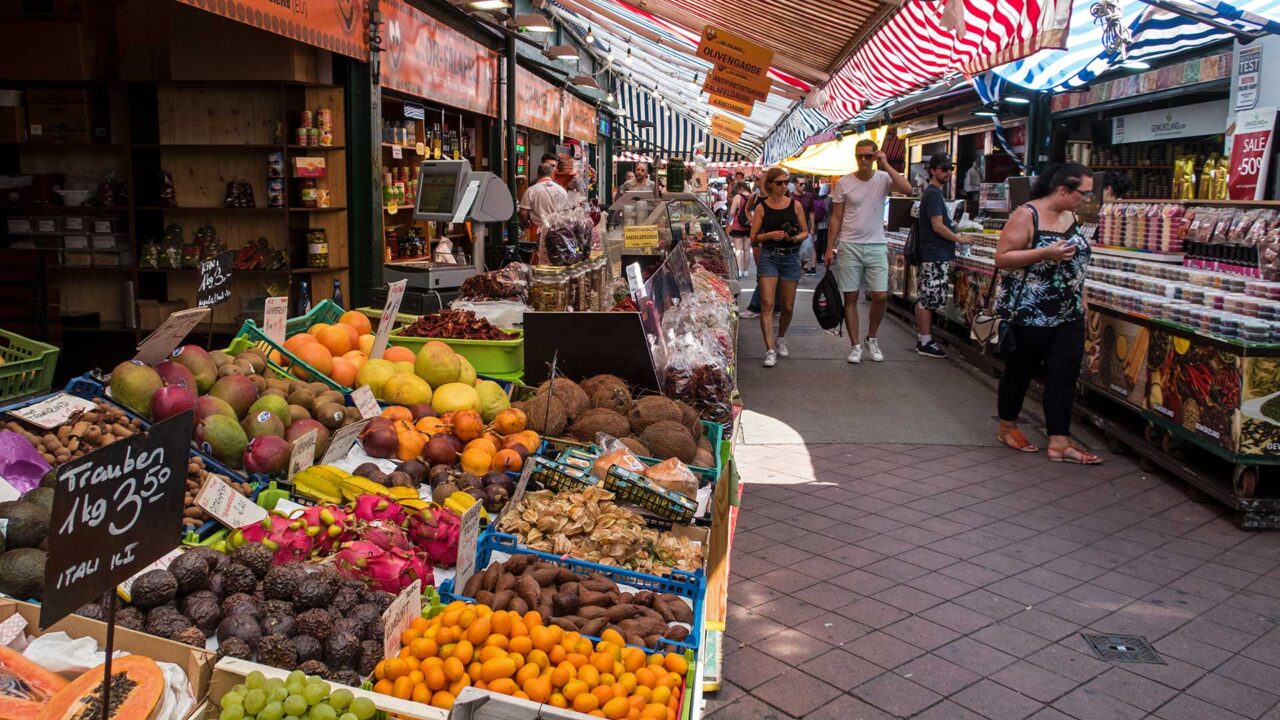
By the way, you can also visit the Naschmarkt on a guided tour including tastings to get more insight on all the delicacies of the market.
3. State Opera
The State Opera is located in the 1st district of Vienna and is one of the most famous operas in the world. The first performance took place in 1869 and events are still hold regularly at the State Opera in Vienna.
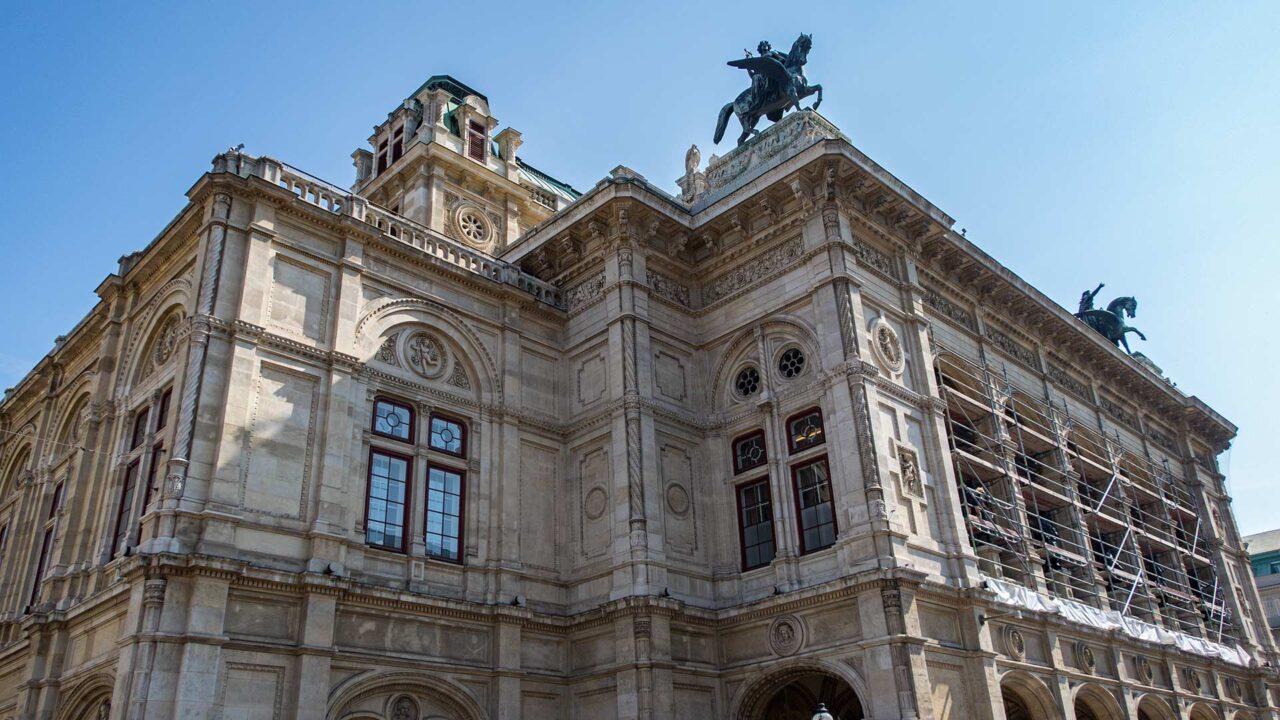
All 10 major works by Richard Wagner are performed at certain intervals, and the world’s best opera singers are engaged for each performance. You can also enjoy pieces by Mozart and many more. The Vienna State Opera Orchestra performs every evening and consists of 92 singers. Prices start at €2 for a standing room ticket and can go up to €200 for a premium seat.
Every year on the last Thursday of Carnival, the famous Viennese Opera Ball takes place, which is attended by celebrities from all over the world. Here you’ll find ticket prices for the Viennese Opera Ball.
4. Burggarten
Just a few meters away from the State Opera you can find the Burggarten. It’s a public park that you can visit on a walk through the city to get some rest under the shade of the trees.
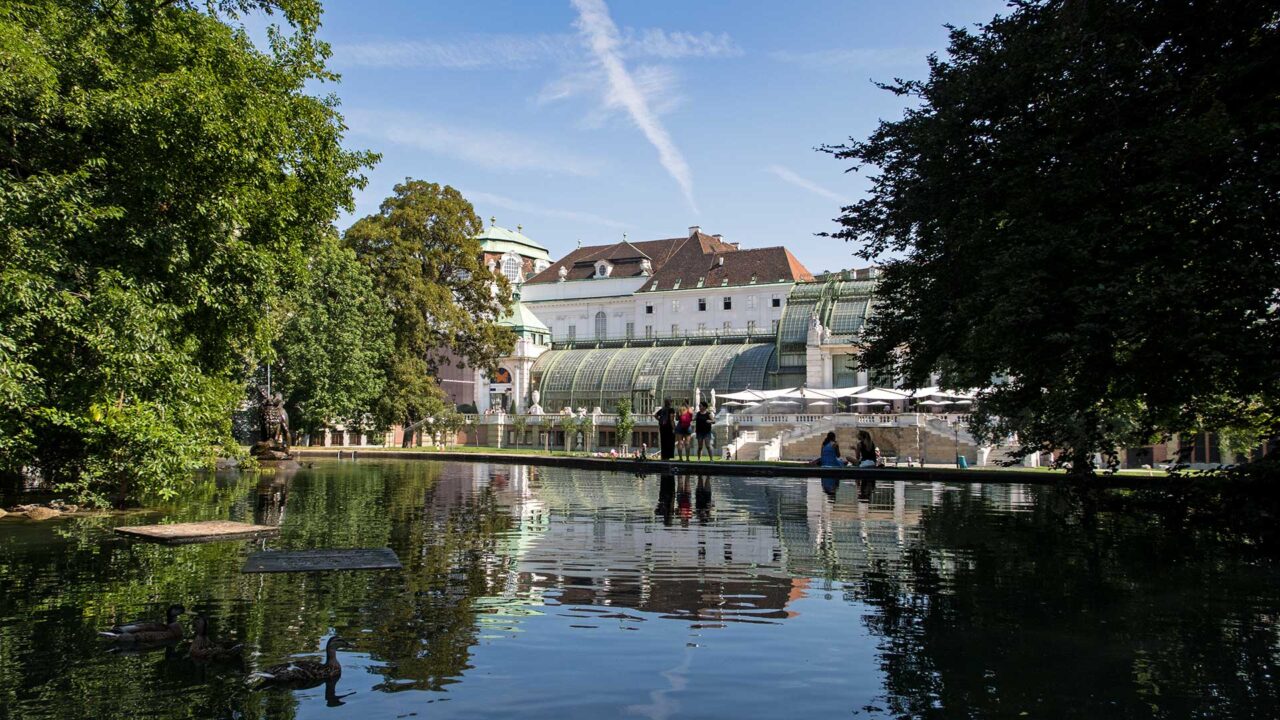
Around the pond, you can admire some statues of e.g. Mozart or Franz-Joseph, a former archduke. You can also see some of the Lipizzaner horses of the Spanish Riding School in the park because it’s located right next door in the Hofburg. The Burggarten is worth a short visit when walking from the State Opera to the Hofburg.
5. Hofburg
The Hofburg has existed since the 13th century and is currently the official residence of the Austrian Federal President and one of Vienna’s historical sights. Covering 24 hectares, the site includes several museums, large parts of the National Library, and the Hofburg Chapel.

The Spanish Riding School, which originally served to train the riders of the imperial family, is also located in the Hofburg. Only Lipizzaner horses are trained here and the riding school even belongs to the intangible cultural heritage of UNESCO.
It’s possible to visit the popular Spanish Riding School with a guided tour and learn more about this institution, that exists since more than 450 years.
6. Graben
The Graben is the shopping street of Vienna and the most famous street of the old town. The street has been a pedestrian zone since 1971 and was thus also the first pedestrian zone in Vienna. In addition to many stores, there are also several cafes and restaurants and especially in summer, the Graben is very well visited.

Moreover, a visit to the Graben can be easily combined with a walk from the Hofburg to St. Stephen’s Cathedral, because the road leads exactly there. The Graben belongs to the The Golden U, together with the Kohlmarkt and the Kärntner Straße. The three of them are the traditional shopping area of the old town.
7. St. Stephen’s Cathedral
St. Stephen’s Cathedral, called ”Stephansdom“ in German, is one of the landmarks and sights of Vienna and a cathedral church since 1365. With 136.4 meters, the south tower is the highest tower of the church. By the way, it was also used as a fire station from 1534 onwards, as it was the tallest building in Vienna and people kept a lookout for fires from the tower.

You can visit some parts of the interior for free, daily from 6:00 am to 10:00 pm. However, if you want to visit the catacombs, the cathedral treasury or the towers, there is an entrance fee. Information on prices can be found at wien-infos.de.
You can also explore St. Stephen’s Cathedral while doing a 2-hour guided tour of the city along with many other sights of Vienna.
8. The Ankeruhr Clock (Anchor Clock)
At the Hoher Markt in the old town of Vienna you will find a large music box called “Ankeruhr”. Built in Art Nouveau style, it has been in this place since 1918 and attracts many visitors, especially at noon.

The clock is a so-called chain clock with 12 figures, where one passes by every hour. At 12 noon, however, the clock plays some music and all 12 figures move along the clock, which is a sight that many tourists do not want to miss. The figures represent, for example, Adam and Eve or angel and devil and are arranged in a historical order.
9. Belvedere Palace
Built as early as 1714, Belvedere Palace stands for Baroque architecture. The Austrian State Treaty was signed here in 1955 and today you can find a gallery and changing exhibitions inside. Tickets to this Viennese sight are available here.

Even if you don’t want to enter the Belvedere Palace, it’s still worth a visit. The beautiful Belvedere Palace is not the only highlight of the complex. Behind the palace there is a huge garden, which is the oldest part of the entire complex. The perfect place for a stroll in the sunshine.
10. Hundertwasser House
Built between 1983 and 1985, the Hundertwasser House is kind of a different sight in Vienna. The Austrian architect Friedrich Hundertwasser designed this house beyond all conventions as a residential building with various trees, green terraces and a park on top of the roof.

Today, the Hundertwasser House is one of the most photographed buildings in Vienna and attracts hundreds of tourists every day.
If you’re interested in the history of its creation, there is also the Hundertwasser Museum and changing special exhibitions. Here you can buy the tickets online.
11. The Prater in Vienna
Between the Danube Canal and the Danube lies the Prater. It is a huge area that consists mostly of parks, the exhibition center and an amusement park. The latter is usually considered the Prater by people, who don’t live in Vienna, and it’s another popular sight of Vienna.
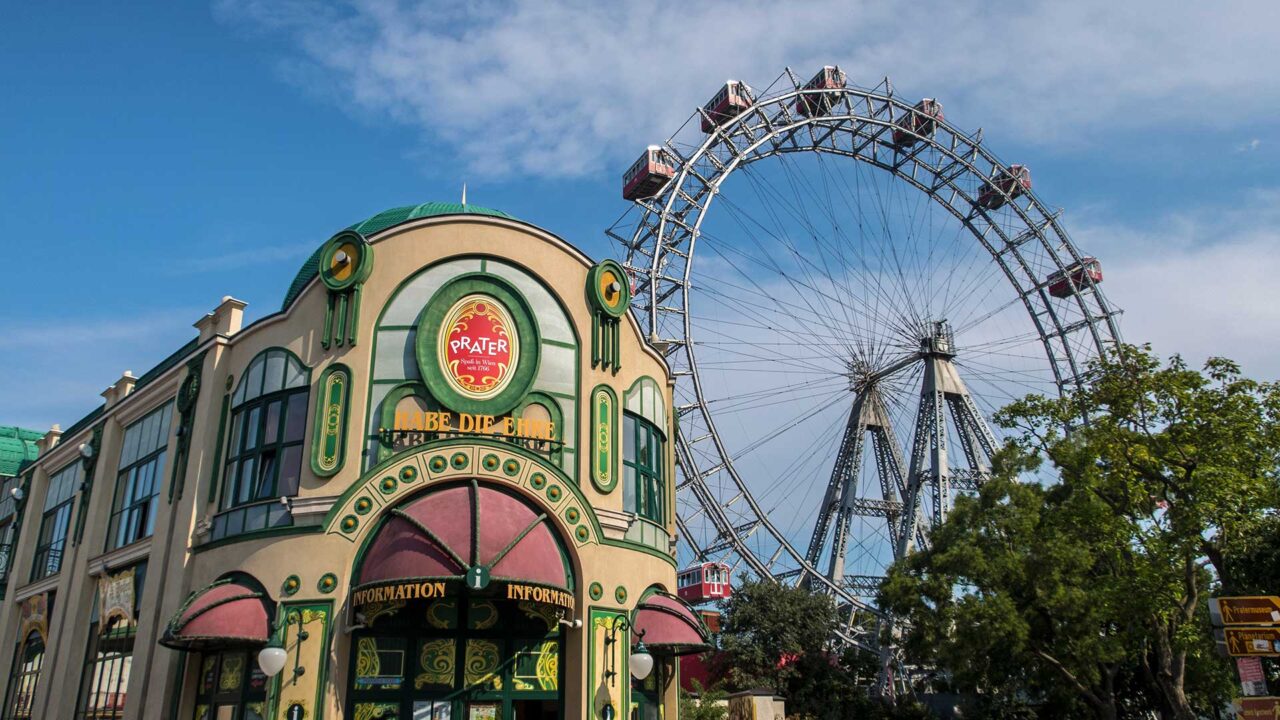
Today, the Prater is a recreational area with many sports facilities where you can play tennis or soccer. In winter, there is an ice skating rink or you can go tobogganing. Most tourists, however, are attracted by the amusement park. Here you can find various rides, restaurants, and snack bars.
Madame Tussauds or the Ferris Wheel are located at the Prater, as well. You can visit the Prater for free but have to pay for rides like for example the Ferris Wheel.
Bonus Point: The Austrian Cuisine
If you are on a city trip to Vienna, you should not only visit the sights of Vienna, but also definitely try the cuisine of Austria or the Viennese cuisine. This includes, for example, the famous Wiener Schnitzel, Käsekrainer, Tafelspitz, Kaiserschmarrn, Sachertorte or apple strudel.


You can find the dishes in countless restaurants in Vienna, which serve local cuisine. At restaurant “Stefanie” you can also taste many culinary highlights on a Viennese delicacy journey . An absolute must for lovers of hearty cuisine.
Plan your trip to Vienna now
More hotel recommendations for Vienna:
- Highlight: SO/ Vienna
- Innere Stadt: Mercure Vienna First
- Rudolfsheim-Fünfhaus: Motel One Wien Westbahnhof
- Mariahilf: Hotel Beethoven Wien
Popular routes to Vienna:
Things to Do in Vienna: Tours and Tickets
Do you prefer to travel with a guide who knows the area very well? Then we recommend a guided tour with a local. This way you can get to know Vienna’s sights in a completely different way. GetYourGuide offers a wide selection of exciting tours for Vienna’s sights.
Tip: The Vienna Pass is perfect for exploring Vienna. It offers you free or priority entry to many of Vienna’s sights and allows you to use the hop-on hop-off buses to explore the city.
How to get to Vienna
The fastest way to reach Vienna is definitely by plane. From many German cities such as Hamburg, Berlin, Frankfurt, etc. there are daily flights to Vienna. Offers can be found for less than €100. The best way to find prices and departure times is at Skyscanner.
Info: The best option to get to the city center from the airport is by City Airport Train (CAT). It takes about fifteen minutes and you can buy tickets here.
You can also travel from Germany to Vienna by train. There are two routes: One is from Frankfurt via Nuremberg, Regensburg and Linz to Vienna and the other one is from Munich via Linz and Salzburg to Vienna. Ticket prices are strongly dependent on your time of travel. You can find more information at Omio.
Travelling to Vienna by car is another option, either via the autobahn near Passau or Salzburg. However, depending on which part of Germany you are coming from, the drive can take a rather long time. Parking can also be expensive in Vienna, costing €15 and more per day at hotels.
Have you already been to Austria’s capital? How did you like the sights of Vienna? Do you have any insider-tips for Vienna? We’re looking forward to your comments.

Tobi
Hi, I'm Tobi, author, passionate travel blogger and founder of this blog. I've been traveling the world a lot since 2013, mostly in Southeast Asia, but sometimes also in Europe. The Thai island of Koh Phangan has become my home base when I'm not traveling. Find out more on our About Us page.